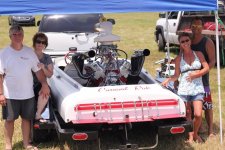Carnivalride said:
There are several things going on here so I’ll try and type it so you can understand but that maybe difficult with my writing and typing skills. Lol
• Yes the center plate helps control the attitude of the boat, but prop position also influences this.
• The outside plates also help control the attitude of the boat taking off but they can be used to help trap air and free the boat up.
• As far as how much skag should be out of the water, every boat is different.
o I usually base my ride attitude of the boats ride pad or main running surface. Too much up on the plates can suck the back of the boat down. For starters I typically start with my plates an 1/8†up. On mine if take a string or laser pointer and run it to the skag it will be about 2†from the bottom of the boat.
o In my experience I’ve had better luck changing props and/or moving them forward or back to adjust the attitude rather than trying to over compensate by plate adjustment. Good close up videos and pictures will help you decide what to change. I also use GPS to verify I’m going the right direction.
o If you need to move the prop up and don’t want to cut your strut a prop guy can bore the taper deeper in your prop and cut the front of the hub back. The other trick is making the radius on the back corners bigger (kills tail lift).
Yes these boats are a balancing act and you have to get everything working together to have them run to their full potential.
JMO $.02
Loren
Loren
Have you tried adjusting the center plate separately from the two outside plates to see how much difference it makes?
I've always adjusted mine equally up to where they are now and they seem to be OK. However, since I haven't adjusted them separately there may be a better adjustment that could be made.
Interestingly, my plates are adjusted to where I was told worked best for the Cole TR-4's by the person who did the bottom.
Because I didn't know where to start, I called and ask for guidance.
The number he gave me didn't seem to be in line with what everyone was telling me, so I started out slightly just above being flat and just kept raising it until it got to where it is now.
It seemed strange that the number he gave me was exactly where I ended up.
I can tell you it comes out straight and runs level, or at least close.
I doubt that the position my plate is now would be good for any other boat than a Cole TR-4 because every boat has a different bottom and rocker combination. It probably wouldn't even be good for the Cole 1, 2s or 3s, just my opinion.


